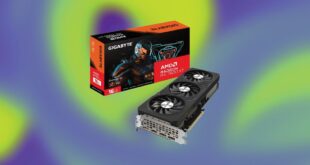There are two main types of storage you’ll find in computers: hard disk drives and solid-state drives. Each serves the same basic function — storing your files, applications and operating system — but they do it in very different ways. Those differences can have a big impact on your computer’s overall performance. If you have been considering an upgrade or a new purchase, understanding these differences can help you make the best choice for your needs. Whether you prioritize speed, storage capacity or cost, knowing how HDDs and SSDs stack up is key.
What is an HDD?
An HDD is one of the oldest forms of storage technology still in use today. It has been around since the 1950s (first introduced by IBM), and while its physical size has shrunk and capacities have grown considerably, the mechanics haven’t changed much.
Physically, an HDD consists of one or more platters coated with a magnetic material, all stacked neatly inside a metal casing. These platters spin at high speeds — typically 5,400 or 7,200 revolutions per minute (RPM) for general-use drives — and a tiny actuator arm hovers just above the surface, reading or writing data (much like vinyl records).
The whole process happens with precision, but since moving parts are involved, you can often hear the distinct whirring sound when an HDD is in use, especially during data-heavy tasks like file transfers or system backups.
What is an SDD?
Instead of relying on spinning disks and moving parts like hard drives, SSDs store data on flash memory, much like the memory used in SD cards, USB drives or phones. They were introduced in the late 2000s, and as prices went down and capacities went up, they supplanted HDDs.
SSDs come in different shapes and sizes, but are typically either a stick like this Seagate Firecuda drive or are in a 2.5-inch enclosure that looks more like a traditional internal hard drive.
SSDs use a technology called NAND flash, where data is stored in cells that can be quickly read or written by the system. This makes them both fast and durable. Since there are no moving parts, you won’t hear any noise or feel vibrations like you would with an HDD, and they’re far less prone to physical damage, which makes them ideal for laptops and portable devices. They’re more power-efficient than HDDs, too.
HDD vs. SSD: The key differences
HDD and SSD are both used for storing data, but their functions and benefits are quite distinct. Let’s break down the key differences between the two to help you understand which one might be the better fit for your needs.
Speed: SSD reigns supreme
HDDs typically have data transfer rates of 30 to 150 megabytes per second, while SSDs can range from 500MBps to 3,500MBps or more, depending on the type.
HDDs rely on mechanical components, which, while reliable, are inherently slower. The platters need time to spin into position, and the read/write arm has to locate the data, leading to delays.
On the other hand, SSDs use flash memory, which allows the data to be accessed nearly instantaneously. Since there are no moving parts, the data retrieval process happens much faster, which then translates into quicker boot times, faster application launches and much shorter file transfer durations when using an SSD.
For example, booting up a computer with an SSD can take less than 10 seconds, while the same process on an HDD might take over a minute. Similarly, transferring large files like high-definition movies can be done in seconds on an SSD, while the same task on an HDD could take several minutes.
Note, though, that not all SSDs (or HDDs, for that matter) are equally speedy. If you’re considering two different 1TB SSDs and one is significantly less expensive than the other, it’s likely the pricier one has faster read/write performance.
Storage capacity and price: HDD for the budget-conscious
HDDs have traditionally been the go-to option for large storage needs because they offer significantly more space at a much lower cost per gigabyte. You can typically find HDDs that offer several terabytes of storage for as little as $50 to $100, which makes them an economical solution if you need to store large amounts of data like photos, videos or backups.
SSDs are more expensive, especially as storage size increases. A 1TB SSD can range from around $100 to $150 or more, while larger capacities like 2TB can easily push the price beyond $200. Prices have dropped over the years, but SSDs still can’t compete with HDDs in terms of cost per gigabyte.
For most people, an SSD with 500GB or 1TB is enough for everyday use in a laptop, but if you’re handling large media files or need extensive storage for backups, an HDD might still make more financial sense.
Durability and reliability: SSD for the long haul
HDDs are mechanical devices, which means they rely on moving parts. This technology is more vulnerable to physical damage. If you drop a laptop or bump your desktop hard enough, the moving parts inside an HDD can fail, potentially leading to data loss. This is one of the biggest drawbacks of HDDs, especially for portable devices where bumps and knocks are, at times, hard to avoid.
SSDs have a solid-state design with no moving parts and generally will hold up better over time. They are ideal for laptops, tablets or external drives that are frequently carried around.
Due to its mechanical nature, recovering data from an HDD can be easier in case of data loss, but this can be costly if the drive fails. SSDs, while more durable and resistant to physical damage, can make data recovery more difficult in the rare event of failure.
Noise and heat: SSDs are a quiet, cool option
HDD and SSD couldn’t be more different in this regard. HDDs, being mechanical devices, generate both noise and heat as the platters spin and the read/write arm moves back and forth.
On the contrary, you won’t hear a thing from an SSD because there are no moving parts to make noise. For users who prioritize a quiet setup — whether in a laptop or desktop — SSDs offer a clear advantage.
SSDs also generally run cooler than hard drives. However, high-performance SSDs, like those used for gaming, can generate a lot of heat and may require a heatsink to help dissipate it.
SSD vs. HDD: Which should you choose?
Choosing between an SSD and an HDD ultimately depends on your specific needs and how you use your device. If speed and performance are your top priorities, an SSD is the clear winner.
However, if storage capacity and budget are your main concerns, an HDD might still be the better option. Hard drives are increasingly rare in new laptops, though, so your only option might be an SSD.
Combining an SSD and an HDD is a great solution for those who want the best of both worlds. You can install the operating system and essential applications on the SSD for speed while using the HDD to store larger files like media libraries, backups or less frequently accessed data.
SSD vs. HDD FAQs
Can I use both an SSD and an HDD in the same computer?
Yes, you can absolutely use both an SSD and an HDD in the same computer, and it’s actually a pretty common setup. Typically, you’d install your operating system, essential applications and games on the SSD so everything runs quickly and efficiently. Meanwhile, you can use the HDD to store larger files like photos, videos and backups, where speed isn’t as critical.
How long do SSDs and HDDs last?
Due to their moving parts, HDDs tend to wear down over time. On average, an HDD might last three to five years, though some can last longer with proper care.
SSDs have no moving parts but they do have a limited number of write cycles. This means that each memory cell can only be written to a certain number of times before it wears out. For the average user, an SSD could easily last five to seven years or more, with many exceeding that under normal usage.
Are SSDs or HDDs better for gaming?
Since the main advantage of an SSD is speed, it directly impacts the gaming experience by reducing load times and making everything feel smoother. If you are planning to play modern, graphically demanding games, an SSD is almost essential.
However, if cost and capacity are concerns, look for a drive specifically designed for gaming with a rotational speed of 7,200rpm or faster.
 meganwoolsey Home
meganwoolsey Home



